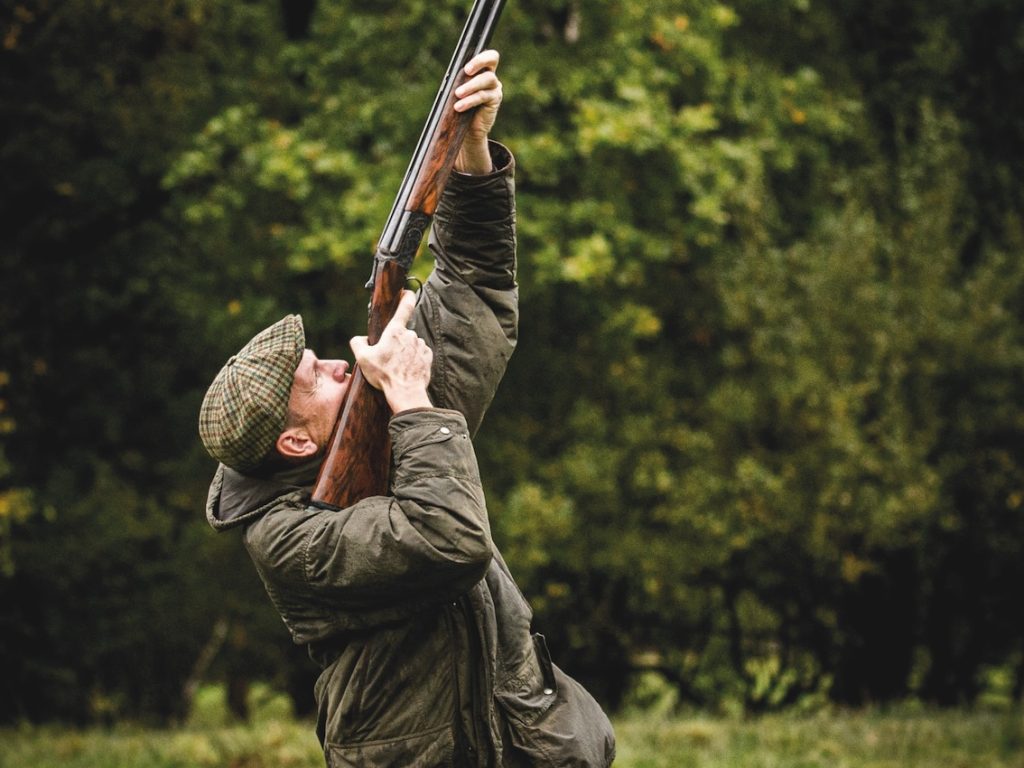Win CENS ProFlex DX5 earplugs worth £1,149 – enter here
GWCT launches 12 gamebird management principles
Responsible shooters should always support conservation and the Game & Wildlife Conservation Trust (GWCT) has now published 12 clear principles for sustainable gamebird management. Extensive research by the GWCT shows that good game management will deliver a net biodiversity gain, a goal for all shoots.
“Biodiversity net gain is embedded in Defra’s 25 Year Environment Plan and research shows that sustainable gamebird management can deliver that”, notes Dr Roger Draycott, the GWCT’s director of advisory and education. “We hope these provide not just practical guidance for game managers and participants in game shooting but broaden the discussion about practical land use for conservation organisations, Government and the general public”.
Will Boris's biodiversity boost work 🤔
📽️Watch this short video from the @fieldsportstv, featuring an interview with GWCT Communications Director Andrew Gilruth.https://t.co/5RaecTopnH pic.twitter.com/f4j5ypWFUU
— The Game & Wildlife Conservation Trust (@Gameandwildlife) October 2, 2020
The GWCT principles were developed with the support of other organisations and the shoots and shooting community who need to follow them.
GWCT: 12 principles of sustainable game management
1. Biodiversity. All shoots, whether based on wild gamebirds, released gamebirds or a combination of both, should strive to achieve a net biodiversity gain on their land.
2. Landscape. Through active management of the rural landscape, effective game management supports the growth of game populations, allowing a sustainable harvest with positive benefits for other species whilst avoiding population levels which could damage other land uses such as farming, forestry and nature conservation.
3. Densities. Gamebirds should only be released and managed at densities appropriate to the local circumstances, so that there is a net environmental gain from undertaking such activity.
4. Diversity. Appropriate habitat creation, management and sometimes restoration is needed for all gamebirds. Maintaining this critical and appropriate diversity of habitats is a feature of our advice and recommendations, based on our scientific research and observation. Habitats created, restored and managed to support gamebirds include woodland, hedgerows, field margins, game cover crops, wild bird seed mixes, moorlands and wetlands.
5. Timing. Releasing gamebirds in the summer increases the number of birds available to shoot in the autumn and winter. Shoot managers should only release gamebirds in habitats that enable them to acclimatise quickly to life in the wild, following the guidelines and recommendations outlined in the Code of Good Shooting Practice and British Game Alliance standards.
6. Development. Following release of gamebirds, habitats should be provided to encompass their year-round needs. All birds should be fully adapted to life in the wild before the first shoot day.
7. Responsibility. Shoots should ensure that all game that is fit for human consumption is eaten.
8. Science. Grouse and wild partridge shoots should assess their proposed bag by calculating the sustainable yield based on annual game counts and follow GWCT recommendations for sustainable harvest of wild game.
9. Sustainability. Game management provides an incentive to privately fund the creation, restoration and management of habitats across large areas of the countryside specifically for wildlife – something which is usually only incidental to other forms of land use such as forestry or farming.
10. Wildlife. Habitats created and managed to support released gamebirds include woodland, hedgerows, field margins, game cover crops, wild bird seed mixes and wetlands. Much other wildlife benefits from this habitat provision. Alongside the habitat provided and managed for gamebirds, predation control and supplementary feeding are often important aspects of game management. These activities can benefit a wide range of other wildlife.
11. Balance. Predation control is undertaken to reduce predation pressure. This is especially important in spring, to reduce levels of predation on nesting birds, nests and chicks and during summer to protect young birds. Many species, including several of conservation concern, benefit from predation control undertaken to conserve gamebirds.
12. Legal control. The predators targeted are common and successful generalists so a temporary reduction in their numbers locally will not jeopardise their population or conservation status. Predation control activities should be undertaken according to best practice guidelines to ensure they are legal, humane and effective. In no circumstances should any protected species ever be illegally killed to protect game, nor should any predation control activity risk negatively affecting the conservation status of a species.
Challenging misinformation
GWCT scientists are out in the field constantly researching wildlife management to give the charity the tools it needs to stand up for working conservation and challenge misinformation in the media. Fieldsports fans should support the vital work of the GWCT which gives an evidence-led account of what is happening in the countryside. Shooting UK readers can contribute here.
A spokesperson for the GWCT advised: “Our research has shown the positive contribution fieldsports can make when done well. We turn that research into practical advice so that you can be part of a force for good. If all those enjoying the new season supported our work, we could do so much more.”
Related Articles
Get the latest news delivered direct to your door
Subscribe to Shooting Times & Country
Discover the ultimate companion for field sports enthusiasts with Shooting Times & Country Magazine, the UK’s leading weekly publication that has been at the forefront of shooting culture since 1882. Subscribers gain access to expert tips, comprehensive gear reviews, seasonal advice and a vibrant community of like-minded shooters.
Save on shop price when you subscribe with weekly issues featuring in-depth articles on gundog training, exclusive member offers and access to the digital back issue library. A Shooting Times & Country subscription is more than a magazine, don’t just read about the countryside; immerse yourself in its most authoritative and engaging publication.







